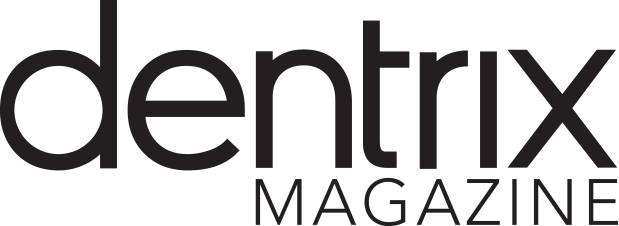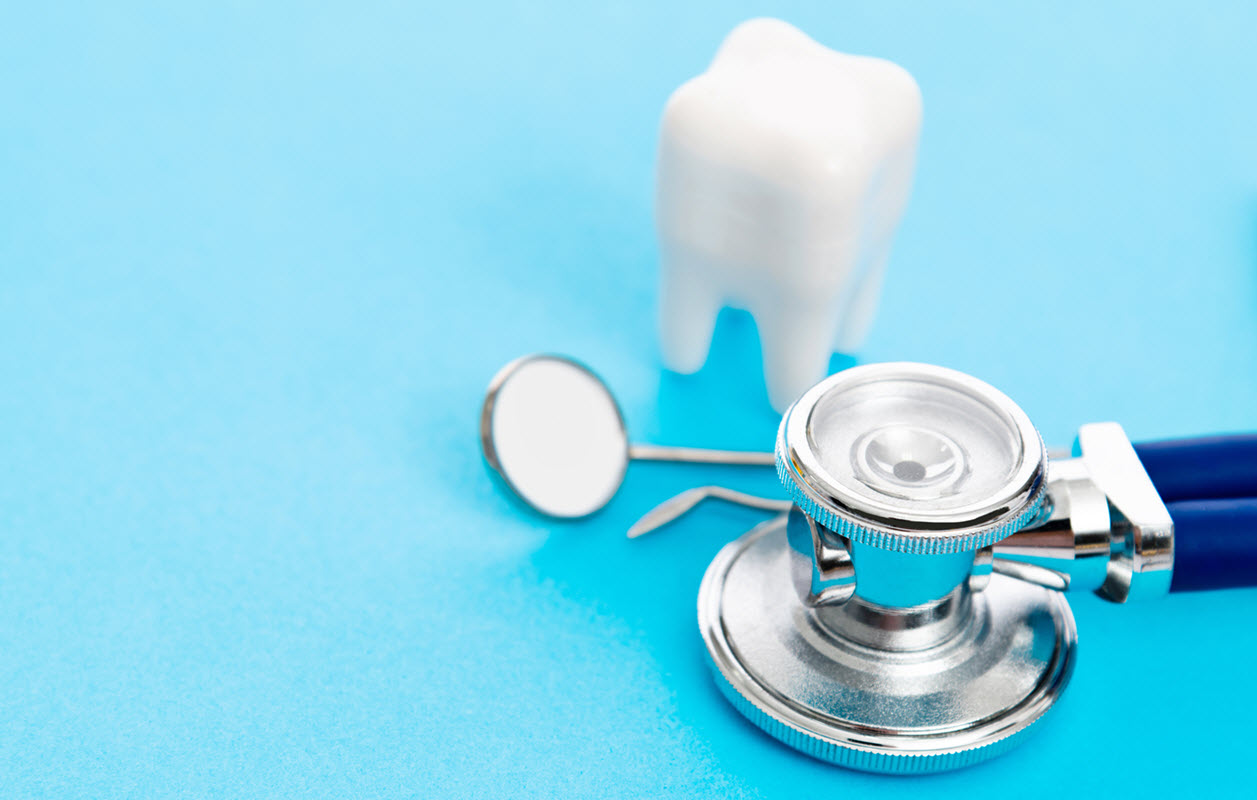Henry Schein One and Imagn Billing offer medical billing software designed to help you successfully implement medical billing into your practice.
Car crashes. Falls. Botched home improvement projects. Misguided baseballs. Any dentist with more than a few years of experience has seen patients with damaged teeth from an accidental injury. Repairing that damage can be expensive, but few dental insurance plans come close to covering the cost — and that isn’t an accident. Dental insurers know that the high costs of dental care from accidents will usually be covered by medical insurance. Unfortunately, many dentists still hesitate to bill medical insurance for dental work because they don’t know how.
As an educator on medical billing for dentistry, I see that one of the hardest things for dental offices to do—even established offices—is to take the first step. Many offices that want to implement medical billing as a routine part of their practice might attend a course or read a book, but they don’t ever start actually billing.
It’s Time to Start Billing Medical Insurance for Accidents and Trauma
Numerous dental procedures can be billed to medical insurance — from implants and grafting, sleep appliances, periodontal treatment and radiographs, to trauma and accidents. In my experience, the trauma or accidents category is one of the easiest and most valuable for dentists to bill medical insurance. In fact, I recommend that every dentist in the country have a solution in place to bill for accidents. If you want to bill medical insurance but you’re not sure how, this is one of the best places to start.
What constitutes an accident? By definition, an accident is an unfortunate incident that happens unexpectedly and unintentionally, typically resulting in damage or injury. Since medical records are considered a legal document, the dentists’ notes, documenting the details of the accident and the damage caused to the oral cavity, is the main source of proof of an accident. Often since the patient sees the dentist first, there is no police report, ER report or referral from a physician. It is the patients’ responsibility to provide all of the details with regard to the accident, and then the dentist must decide if the damage to the oral cavity is consistent with the accident the patient describes. The most consistent way to document this is by having the patient fill out an accident report provided by your office. If the provider finds the details reported by the patient to be true, you have an accident case.
Save Your Patients Money by Billing Their Medical Insurance
Many medical insurance plans have preferred benefits for treatment related to an accident. Most plans, in fact nearly all, have coverage for dental trauma when it is related to a documented accident. Some even waive or reduce deductibles when treatment is related to an accident claim. Depending on the severity of their accident, the patient may have already been seen in the emergency room or by a physician. This may have satisfied most or all of their deductible. Or, if the trauma wasn’t significant enough to be seen in a hospital, you might be the first provider to bill medical insurance for this accident.
Let’s look at an example of an accident case, when medical billing isn’t utilized. You have a patient that presents to your office needing major reconstruction after suffering a dental accident. You estimate that the treatment total will be $10,000. Let’s suppose that in this scenario, dental insurance will cover $1,500, and the remaining $8,500 will come out of the patient’s pocket. Patients in this situation are often left with a huge bill or are forced to choose a less desirable treatment plan due to financial limitations. In cases like this, medical billing can make a big difference.
By offering medical billing, the above example might look like this: you would take the $10,000 treatment total, minus the patient’s $5,000 deductible, less the covered percentage (50 to 80% on average), and you would have your patient’s estimated portion. But don’t forget about the patient’s dental insurance benefit: You can often bill the patient’s dental insurance as a secondary to help satisfy both the deductible and coinsurance. By using medical and dental insurance, this $10,000 treatment plan could potentially cost the patient $4,500 rather than $8,500. In some situations, the patient will have already satisfied their deductible and met their out-of-pocket max, so potentially the entire $10,000 treatment plan could be covered by medical insurance.
Help Patients Get the Care They Need — While You Get Paid
Let’s consider a real-world trauma case that I was personally involved with. A 63-year-old male patient fell while walking and hit his face on the bumper of a nearby car. He was transported to the hospital where he underwent surgery to repair the broken bones in his face. A few days later he was referred to us by the surgeon because there was significant damage to his teeth.
When we saw him, we found that almost all of his anterior teeth, both upper and lower, were non-restorable. He was already missing a number of posterior teeth, and the few of those that were remaining were also compromised. The ideal treatment plan for him was upper and lower implant-supported dentures.
After submitting the pre-authorization, with X-rays, the accident report, and the doctor’s clinical notes, the medical insurance authorized the treatment. In this particular case, because this patient had already been treated by the surgeon, his deductible was met and he paid nothing for the services we provided. We saved this patient more than $50,000 because we were willing to bill medical insurance. Not only did we help someone who otherwise couldn’t afford the treatment he needed, but our practice was paid our full fee for this case.
The Quickest Way to Start Implementing Medical Billing for Accidents
Consider the patients you saw in the last three months. Can you think of one of them that had an accident? This could be someone who fell while walking, was hit in the face with a baseball, took an elbow to the mouth on the trampoline or even was head-butted by a toddler, to name a few.
The fastest way to determine if there was an accident is to ask one simple question: “How exactly did this happen?” We’ve all seen patients who are in pain or discomfort due to broken teeth, but how many of us are asking this question? When you ask this at both new patient and hygiene exams, you will find that patients may not have included that information in their history because they don’t realize that an accident is relevant. If you will add that one question to your exam, you will likely find multiple accident cases in your practice.
To get started, I suggest at your morning huddle that you identify all the patients coming in for exams, then remind the person completing the exam to ask the question, “How exactly did this happen?” Asking the right questions like this when scheduling these accident patients can help streamline the process and help you get more comfortable with medical insurance billing.
Establish a Process for Medical Billing
To create a process beyond that first question, here are some of the key steps:
- Have your patient complete an accident report. A fillable PDF can be found as a resource on the Devdent website.
- If the doctor believes the damage to the oral cavity is consistent with the accident report, you can consider starting the medical billing process.
- Get a copy of the patient’s medical insurance card, front and back.
- Complete a verification of benefits. You will need to call the insurance company and find out what accident coverage the patient has, what the remaining deductibles are, and any plan exclusions.
It is very common for plans to have separate coverage specific to accidents. If you determined when the patient scheduled the initial appointment that this was an accident, you can complete this verification of benefits before the patient even arrives. This is the goal.
Keep Detailed Notes Regarding Treatment, and Get Pre-Authorization
It is essential that your clinical notes are detailed and consistent with the accident report. I recommend using a template called SOAP (Subjective, Objective, Assessment and Plan). Details on what constitutes a SOAP note and how to use the template can be found on our website. At a minimum, the provider needs to explain the damage seen in the oral cavity, what the consequences would be if it was left untreated and that the damage is consistent with the accident the patient described.
Remember that an accident is not necessarily considered an emergency, so many insurance payers will still require pre-authorization. If the patient presents in pain and immediate treatment is necessary, you could bill it without pre-authorization as an emergency service. (Please note that an implant is not considered an emergency treatment.) Procedures that are not an emergency will need to be submitted for pre-authorization before treatment is completed.
Pre-authorizations can take, on average, two weeks and are submitted via paper. Some insurance companies have portals you can use, and some have very specific pre-authorization request forms that must be used. If you’re using a third-party company like Imagn Billing, they can handle this pre-authorization for you.
Be Patient With Your Patient’s Insurance Company
Once the authorization is approved, you can begin treatment. Claims are not submitted until the procedure is entirely complete. That doesn’t mean the entire treatment plan must be complete, but that specific treatment code must be completed in its entirety. For example, when billing an implant, you would bill for the implant placement on the day of surgery, then bill for the abutment and crown on the date of seat. It is not uncommon for treatment plans to take more than six months if surgery is required. Pre-authorizations are only valid for a specific period of time, often for 90 days. If your pre-authorization expires before treatment is complete, a simple phone call to the insurance company asking for an extension will usually suffice.
Conclusion: You Can Do It!
Medical billing can be a bit confusing and daunting, but accidents are a great place to start. Taking on the paperwork and mastering the learning curve yields big benefits to you and your patients—you are not only paid for your work, but patients may seek you out when they find you can bill their medical insurance. Meanwhile, patients get access to the care that they need and can potentially save thousands of dollars.
Learn More
If you don’t want to take on the paperwork on your own, Henry Schein One and Imagn Billing have teamed up to offer medical billing software designed to help dental practices take the first step so you can successfully implement medical billing into your practice. In this way, Imagn Billing can help you provide better patient care and increase case acceptance. Get started today by visiting our website today.
Register for our Medical Billing—The Game Changer for Dental Accidents webinar on June 15, 2022 at 11:00AM MT to find out how Imagn Billing can help you increase your revenue while offering patients improved health.
This article is provided for general information purposes only and does not constitute legal or professional advice. You should not act on the basis of any material contained herein without obtaining proper legal or other professional advice specific to your situation as needed. The views expressed by the individuals or other third parties herein are those of the individuals or third-party and not, necessarily, of Henry Schein One, LLC. Certain components of the products may be provided by third parties. Henry Schein One, LLC. and its affiliates are not responsible for, and expressly disclaim, all liability for damages of any kind arising out of the use of those third-party products or services.
By Crystal May, COO and co-founder of Devdent and Imagn Billing





